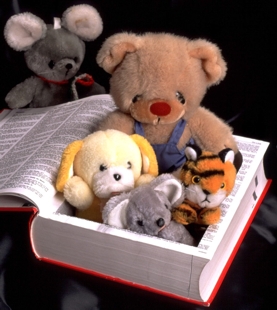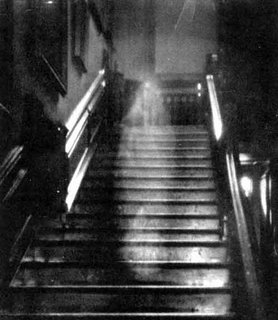I found a wonderful article about Fantasy Literature (it’s been around for quite some time) and thought it good enough to share. It’s a bit long (for this blog), but you can either find it (here), or read it below:
When the Children Read Fantasy
Terry Pratchett (1994)
There’s a feeling that I think it’s only possible to get when you’re a child and discover books. It’s a kind of fizz. You want to read everything that’s in print before it evaporates.
I had to draw my own map through this uncharted territory. The message from the management was that, yes, books were a good idea, but I don’t actually recall anyone advising me in any way. I was left to my own devices.
I’m now becoming perceived as a young people’s writer. Teachers and librarians say, “Your books are really popular among children who don’t read.” I think this is a compliment; I just wish they’d put it another way.
The aforesaid school librarians tell me that what the children read for fun, what they’ll actually spend their money on, are fantasy, science fiction and horror and, while they offer up a prayer of thanks that the kids are reading anything in this electronic age, this worries them.
It shouldn’t.
Not long ago I talked to a teacher who, having invited me to talk at her school, was having a bit of trouble with the head teacher who thought that fantasy was morally suspect, irrelevant to the world of the nineties, and escapist.
Morally suspect? Shorn of its trappings, most fantasy would find approval in a Victorian household. The morality of fantasy and horror is, by and large, the strict morality of the fairy tale. The vampire is slain, the alien is blown out of the airlock, the evil Dark Lord is vanquished and, perhaps at some loss, the Good triumph — not because they are better armed, but because Providence is on their side. Let there be goblin hordes, let there be terrible environmental threats, let there be giant mutated slugs if you really must, but let there also be Hope. It may be a grim, thin hope, an Arthurian sword at sunset, but let us know that we do not live in vain.
Classical written fantasy might introduce children to the occult, but in a healthier way than might otherwise be the case in our strange society. If you’re told about vampires, it’s a good thing to be told about stakes at the same time.
As for escapism, I’m quite happy about the word. There’s nothing wrong with escapism. The key points of consideration, though, are what you’re escaping from, and where you’re escaping to.
As a suddenly thirsting reader I escaped first of all to what was then called Outer Space. I read a lot of SF, which as I have said is only a 20th century subset of fantasy. And a lot of it was, in strict literary terms, rubbish. But the human mind has a healthy natural tendency to winnow out the good stuff from the rubbish. As far as I am concerned, escapist literature let me escape to the real world.
Irrelevant? I first came across any mention of Ancient Greek civilisation in a fantasy book. But in the fifties most schools taught history like this: there were the Romans who had a lot of baths and built some roads and left. Then there was a lot of undignified pushing and shoving until the Normans arrived, and history officially began.
We did science — in a way. Yuri Gagarin was spinning around above our heads. I don’t recall anyone at school ever mentioning the fact. I don’t even remember anyone telling us that science was not, as we might have been led to believe, all that messing around with chemicals and magnets, but rather a way of looking at the Universe.
SF looked at the Universe all the time. I make no apology for having enjoyed it. We live in an SF world. Two miles down there you’d fry and two miles up there you’d gasp for breath, and there’s a small but, given the consequences to us, significant chance that in the next thousand years a large comet of asteroid will smack into the planet. I’m not making it up. I don’t lose sleep worrying about it. But finding this out when you’re 13 or so is a bit of an eye opener. It puts acne in its place, for a start.
Them other worlds out there in space got me interested in this one down here. It is a small mental step from time-travel to paleontology, from sword ‘n’ sorcery fantasy to mythology and ancient history. Truth is stranger than fiction; nothing in fantasy enthralled me as much as reading of the evolution of humankind from proto-blob to newt, reptile, tree shrew, Oxbridge arts graduate, and eventually to tool-using mammal. I first came across words like ‘ecologist’ and ‘overpopulation’ in SF books in the late fifities and early sixties, long before they’d become fashionable.
I also came across the word ‘neoteny’, which means ‘remaining young’. It’s something which we as humans have developed into a survival trait. Other animals, when they are young, have a curiosity about the World, a flexibility of response, and an ability to play which they lose as they grow up. As a species we have retained these. As a species, we are forever sticking our fingers into the electric socket of the Universe to see what’ll happen next. It’s a trait that’ll either save us or kill us, but by god it’s what makes us human beings. I’d rather be in the company of people who look at Mars than people who contemplate humanity’s navel — other worlds are better than fluff.
So let’s not get frightened when the children read fantasy. It’s the compost for a healthy mind. It stimulates the inquisitive nodes, and there is some evidence that a rich internal fantasy life is as good and necessary for a child as healthy soil is for a plant, for much the same reasons.
Here’s to fantasy as the proper diet for the growing soul. All human life is there — a moral code, a sense of order and, sometimes, great big green things with teeth. There are other books to read and I hope children who start with fantasy go on to read them. I did. But everyone has to start somewhere.
One of the great popular novelists of the early part of this century was G.K. Chesterton. Writing at a time when fairy tales were under attack for pretty much the same reason as books can now be covertly banned in some schools because they have the word ‘witch’ in the title, he said: “The objection to fairy stories is that they tell children there are dragons. But children have always known there are dragons. Fairy stories tell children that dragons can be killed.”

Enjoy!










